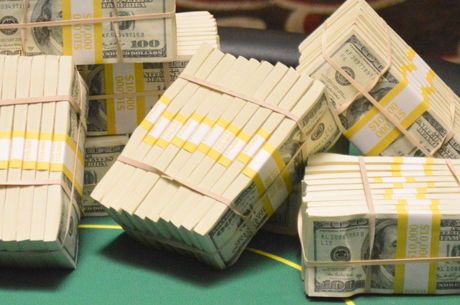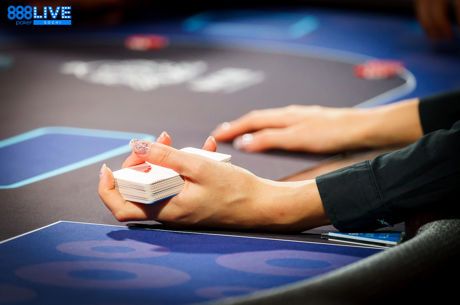Strategy Vault: A Closer Look at Deuce-to-Seven Draw

Digging deep into the PokerNews strategy archives can lead to a buried treasure, so we'll be unearthing a few gems for your viewing pleasure. For this edition of the Strategy Vault series, we're taking a closer look at one of the games that's becoming more and more popular, deuce-to-seven draw.
Survey the poker landscape in the hole-card-camera era, and you'll be convinced that only two types of poker are played anymore: flop poker games such as hold'em and Omaha, and stud poker games such as razz and seven-card stud. This despite the fact that many people who played poker as children can remember this quaint form of the game that used to be played called "draw poker". In fact, draw poker is the basic variant used in all of the video poker terminals that litter casino bars from Foxwoods to Las Vegas.
Despite its history, draw poker is a tough find in brick-and-mortar poker rooms. The game is tedious to deal, doesn't provide much information (in terms of exposed cards, whether community cards in flop games or exposed cards in stud games), and doesn't leave room for much action, with only two betting rounds per hand. Unless, of course, the game is deuce-to-seven draw.
Deuce-to-seven is a lowball game, and like all lowball games the object is to make the worst possible poker hand. In deuce-to-seven lowball draw, that hand (called a "number one") is 2x3x4x5x7x, but not of the same suit. Unlike razz (or ace-to-five lowball), straights and flushes count as high and are therefore no good. Mike Matusow was painfully reminded of this fact during a 2008 World Series of Poker event, Event #18: No-Limit Deuce-to-Seven Draw.
Late on Day 2, Matusow got involved in a pot against Jeff Lisandro. At showdown, Matusow showed jack-nine before realizing that every single card in his hand was a club, giving him a flush. Matusow survived the error and went on to win the tournament, but not without a little egg on his face for making such a basic mistake.
Most players who play deuce-to-seven these days stay away from the single-draw variant and play triple draw instead. In fact, some of the biggest online games are deuce-to-seven triple draw with betting limits as high as $2,000/$4,000. What makes triple draw so attractive to its many disciples is the fact that there are three draws on each hand, allowing for twice as many betting rounds — four, compared to two — as single-draw games. The additional draws require more decisions on each hand and therefore allow for the application of more skill than in single draw. And as might be expected, the increase in the number of draws permitted allows for stronger hands to be made than in single-draw games. In deuce-to-seven single draw, a jack is a decent hand. In deuce-to-seven triple draw, a jack is almost always a surefire loser.
It's also important to note that while it may take more skill to play deuce-to-seven triple draw successfully, many top professional players believe that no-limit deuce-to-seven single draw is the purest game of poker left. It's an old school game not nearly as common as no-limit hold'em, which many claim is a game that has been "solved," but one that attracts a very unique type of poker professional for the $10,000 no-limit deuce-to-seven single draw event that takes place each year at the WSOP.
As mentioned before in this column, a good basic rule of thumb for beginners is to treat triple draw like Omaha: always try to be drawing to the nuts or the near-nuts. That means playing hands that contain a deuce. It is impossible to make a seven without a deuce, and the eights that can be made with a deuce are much stronger than those that can be made without one.
Also like Omaha, many players see five cards in their hand and three possible draws and severely lower their starting hand requirements from what they would play in stud variants or in hold'em. This is a huge leak that is easily avoided with some discipline. On the first draw, if you're drawing more than two cards on anything other than a blind steal that has been called by one of the blinds, you're throwing money away. Rare is the three-card or four-card draw that improves enough by showdown to take down the pot. While you're drawing three cards, your opponents are taking three shots at one card to make an eight or better. It's a silly handicap to give yourself.
The one-card draws are the bread-and-butter of hands that will generally be played through all three draws. These are hands with four cards to a seven, an eight, or (sometimes) a nine. Generally speaking, if the hand contains a deuce to start with, it's much more playable than not. Also watch out for potential flush draws and straight draws. Hands like 3x4x5x6xXx aren't as strong as they look at first glance, since drawing a deuce or a seven makes a straight.
Two-card drawing hands require a bit more finesse to play. First of all, they absolutely require improvement after the first draw. If the hand hasn't improved to a solid one-card drawing hand after the first draw, it generally needs to be folded. Strong two-card drawing hands will all contain a deuce and two other cards to a seven; that range can be expanded to include eights based on position (i.e., closer to the button allows for a wider range). Secondly, how much the hand improves after the first draw will often determine how to play it from there. The power of position shouldn't be overlooked. A weak four-card hand is more playable with position more so than it is if the player will be first to act. Why? There is information to be had from position — whether a player checks or bets, and more importantly, how many cards they take on the next draw (or took on the previous draw).
Try not to worry too much about hands that don't require any draws — the pat sevens and pat eights of the world. It's very rare that you'll be dealt one of those hands, and when you are, it tends to play itself. The best advice I can give is not to slowplay. Slowplaying is not often rewarded in limit poker, where players are often going to draw against you regardless of whether you give them a free draw. Try to get as many bets in the pot as possible when you have a strong hand. Bet, raise, and reraise, and don't stop until you're at showdown.
Triple draw provides a nice break from the flop and the stud games. With a bit of practice, players can easily develop a proficiency in the game — as well as an addiction to it.
This article was originally published on Nov. 22, 2008.
Want to learn more about the different variants of poker? Check out the Poker Rules section here on PokerNews.
To stay on top of the poker world, follow us on Twitter and like us on Facebook.








